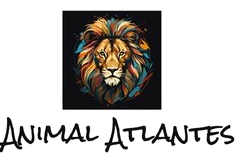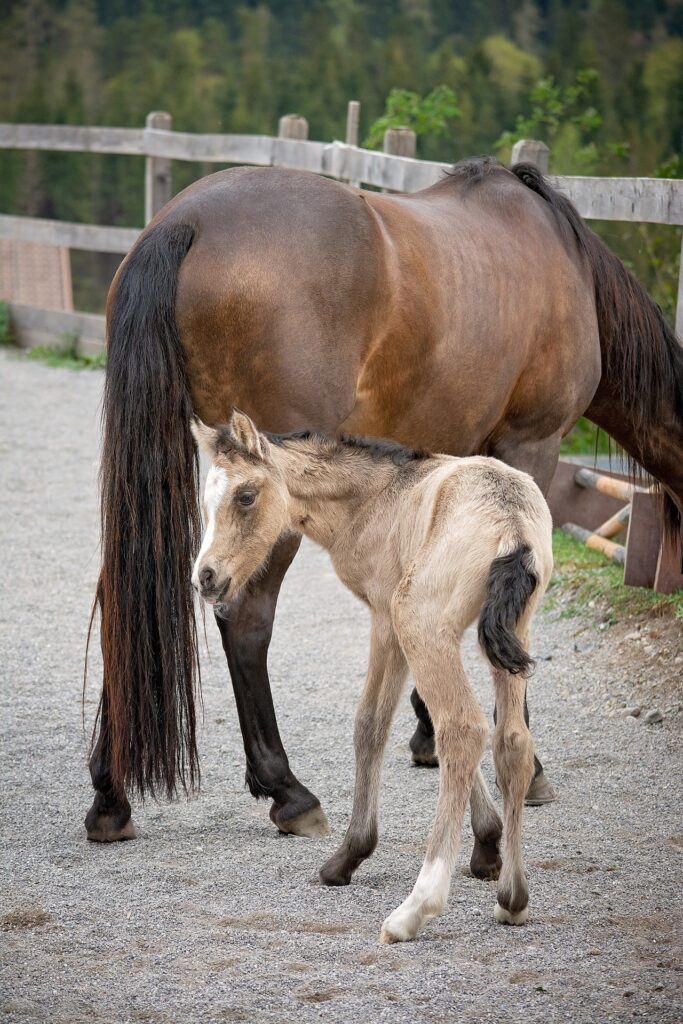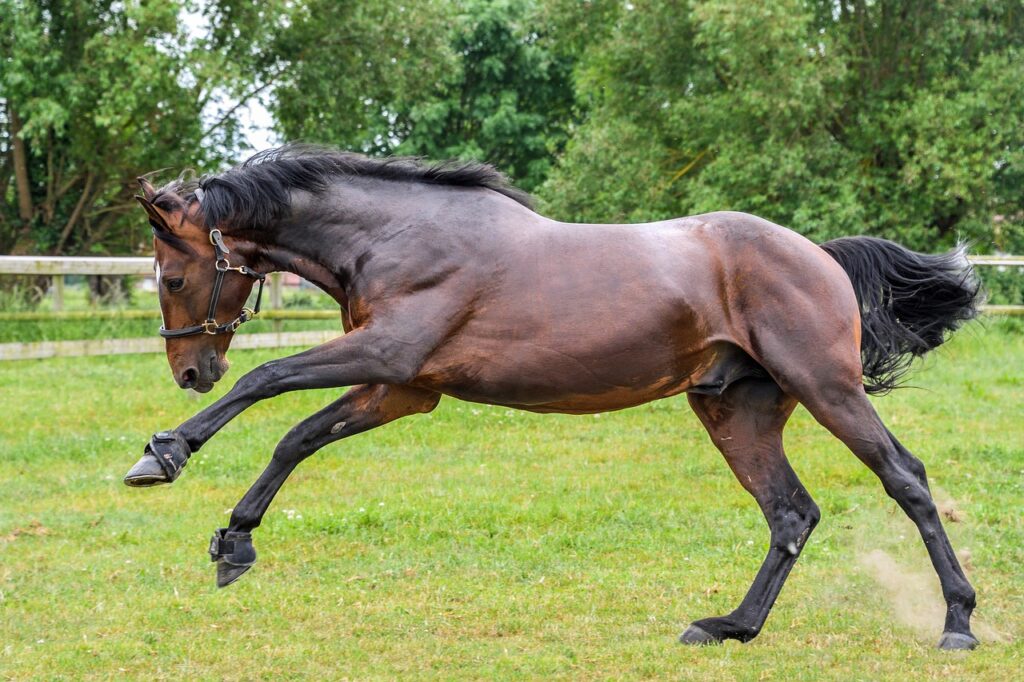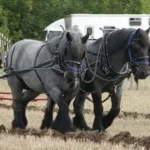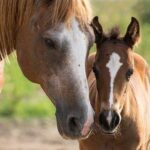What is a newborn foal?
It always feels fascinating to see baby horses. Horses have different names based on the stage of their development. A newborn baby horse is called a foal.
A foal, regardless of its gender, is called newborn or said to be in the neonatal stage, from the day of its birth until 1st week. A newborn foal receives nourishment from the mare’s milk, much like human infants. New-born female foals are called fillies, whereas male newborn foals are called colts.
Key Takeaways:
| Aspect | Newborn Foals | Foal Hooves |
|---|---|---|
| Definition | Baby horses are called foals. | A foal’s hooves are called eponychium or “golden slippers.” |
| Gender Specific Terms | Female newborns are fillies. Male newborns are colts. | The eponychium protects the mare during pregnancy. |
| Physical Features | Open eyes, normal breathing, pink mouth, quick standing | Deciduous hoof capsule covers hooves at birth. |
| Development Stages | Neonatal stage from birth to 1 week. | Hooves harden as air contacts them. |
| Hardening Time | Hooves start hardening upon birth, vary with age. | Foal hooves grow faster than adult horses. |
| Hoof Growth Rate | Rapid growth initially, slows as foal matures. | A nursing foal grows about 0.6 inches per month. |
| Hoof Regeneration | Continuously regenerate hooves throughout life. | Regenerates hooves in about 145 days (4.5 months). |
| Sound of Hooves | Hooves make a clopping sound on hard surfaces. | Clop, clip-clop, or clippity-clop sounds are common. |
Some of the typical features of a new-born foal include:
- Open eyes
- Normal breathing mechanisms
- Normal, light pink, colored mouth, and tongue membranes, once the normal breathing pattern is established
- Respiratory rate- nearly 60 breaths/ per minute
- Heart rate around 80 – 100/beats per minute
- Ability to stand within 40 minutes to 1 hour of being born
- Can nurse within 2 hours from the time of birth
The newborn foal stops weanling around 4-6 months, a stage that is followed by yearling at the age of 1 year.
What are newborn foal hooves called?
Foals or baby equines are born with unique hooves covered with a rubbery layer. The soft hooves of a foal protect the utero of the mare from any sharp edges during pregnancy and birth.
A newborn foal’s hooves are called an eponychium. More informally, they are also known as “golden slippers,” “‘foal slippers’”, or “fairy fingers”. Although the foal’s hooves remain soft at birth, once the air hits its feet the hooves start to dry out quickly. It is interesting to note that a foal is born with fully formed hooves.
At birth, the hooves remain in a conical shape and are protected with a protective layer, called the deciduous hoof capsule. The hooves of a newborn foal are made of eponychium and horn tubule, which get worn off within 2- 3 days of its birth, as it starts walking.
Baby horse feathers || horse eponychium
Baby foals are fascinating and exhibit many unique features. One of the most interesting features that newborn hooves display are rubbery capsules covering their hooves.
Baby horse feathers, or horse eponychium, in the veterinary literature, are called the deciduous hoof capsule of fetuses and foals. Baby horse feathers protect both the foal and the mare from getting hurt during the pregnancy and at the time of giving birth.
It is often said that the eponychium feels soft and squishy at the time of the foal’s birth, which starts getting hard as the foal starts walking.
Foal hoof capsule
By now you know that foals are born with fully formed hooves. However, their hooves differ from the more matured foals and horses in terms of rigidity and shape.
New-born foal hooves tend to be soft and remain covered with a layer called the foal hoof capsule or deciduous hoof capsule. The foal hoop capsule is a deciduous structure, which disappears as the animal ages and matures. Although, the rate of disappearance may vary depending upon factors like health conditions, weather, etc.
The foal hoof capsules are composed of the hoof wall, sole, frog, and bulbs of the heels. When the baby foal hits the ground to walk the soft hoof capsules are worn down to meet the level sole, revealing the real hooves.
Hoof capsules are susceptible to injuries if the horse legs are pushed to bear abnormal weight distribution. These injuries may develop over time as the horse matures.
How long does it take for foal hooves to harden?
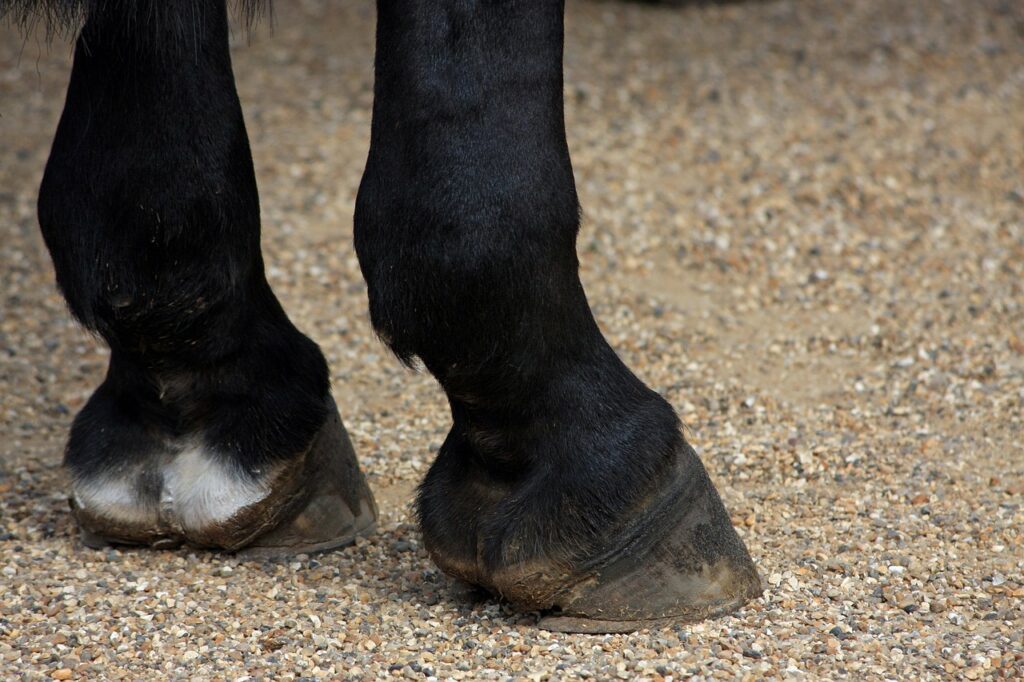
Foals are born with soft hooves that are covered with a rubbery layer. Sometimes it can be hard to believe that the strong and hard hooves of foals and grown-up horses were once a soft squishy matter.
That being said, hooves’ growth and hardening process start from the time the newborn’s feet are touched by air. However, the speed of the process will vary, as the foal ages. Speaking in general terms, a foal’s hooves grow faster than a fully grown horse’s hooves.
A nursing foal will usually have a growth rate of 0.6 inches per month, and as it matures the growth rate drops to about 0.48 inches per month.
The hooves have a dynamic structure and undergo changes throughout the lifetime of a horse. That being said, if you want your foal to have a healthier hoof growth, you can follow the tips below:
– Exercise
– Provide it proper nutrition
– Consider proper health supplement
Foal hoof development
Foals are born with perfectly symmetrical hooves that are paired left and right. And they continue to regenerate their hooves even after they get fully matured, throughout their life.
So, it is not wrong to state that the development of hooves in foals and horses is a continuous process. A young foal replaces, on average, its hoof capsules in about 145 days, or 4.5 months, from its birth. Whereas, a foal in its weaning/ yearling period takes around 283 days to regenerate its hooves.
Other aspects of hoof development in foals include the hardening of the hoof walls, which take place as the foal matures or ages. A foal has the ability to develop its hooves at a much faster rate than a matured horse, as it needs to walk to follow its dam and other members of the herd.
The hoof growth rate in horses, based on their age is:
| Foals | 0.43 millimeters per day |
| Weanlings | 0.28 millimeters per day |
| Matured Horses | 0.2 millimeters per day |
A healthy developed hoof generally has:
– A natural gloss
– Elastic coronary band
– No cracks, flares, or chips
– Wide base at the ground
– Thick and round shape
– Well-developed bars
– Concave sole shape, etc.
hoof wall length, only flaky sole and excess bar can help achieve a balanced hoof.
What is the sound of horse hooves called?
Hooves can be called the most important part of a horse’s body and existence and it is rightly said “no hooves, no horse”. That is why the hooves are taken care of meticulously.
Strong and well-trimmed hooves make a beating sound when a foal or horse walks or runs, and it is called clop. Traditionally, hooves sound is also described by words like clip-clop (while walking) and clippity-clop (while throttling). These sounds are also associated with any animal wearing hooves.
The sound of the hooves can be heard from far away and they can easily tell you what gait they are at. Horse hooves make different sounds depending on the way they walk, trot, and canter.
| Style | Gait |
| Walk | 1–2–3–4; 1–2–3–4 |
| Trot | 1–2;1–2 |
| Canter | 1–2–3; 1–2–3 |
It is interesting to note that horse hooves make clop sounds only when they hit a hard surface like concrete. When horses trot, walk or canter on softer surfaces like mud or grass, their hooves tend to make a stomping sound.
Frequently Asked Questions :
1. What are newborn horse hooves, and how do they differ from adult horse hooves?
Newborn horse hooves, also known as foal hooves, are the developing feet of baby horses. They are smaller, softer, and more flexible than adult horse hooves. Foal hooves have a specialized structure called “fairy fingers” or “eponychium,” which covers the hoof and helps protect it during birth. This eponychium is shed shortly after birth as the hooves harden.
2. When are baby horse hooves developed, and what is their purpose?
Baby horse hooves start developing while the foal is in the womb, serving to protect delicate limb structures. The eponychium, also known as “fairy fingers” or “horse hoof feathers,” acts as a cushioning barrier, preventing damage to the mare’s uterus during gestation.
3. What is the term for baby horses, and what are their hooves called at birth?
Baby horses are called foals. At birth, foals have soft, pliable hooves referred to as “newborn foal hooves” or “foal slippers.” These hooves gradually harden and develop into fully functional adult hooves.
4. Do foal hooves have any unique characteristics?
Yes, foal hooves are unique because they are covered by the eponychium, also known as “fairy fingers” or “horse hoof feathers.” This structure protects the foal’s hooves while inside the mare’s uterus and is shed shortly after birth as the hooves mature.
5. How do you care for newborn horse hooves?
Caring for newborn horse hooves involves ensuring the foal stands and moves properly. Regularly monitoring the hooves for any abnormalities and ensuring the foal receives proper nutrition is essential. A veterinarian or farrier may be consulted for guidance on hoof care in young foals.
6. When do foal hooves become fully functional adult hooves?
Foal hooves gradually harden and develop into adult hooves within the first few months of a foal’s life. It’s crucial to monitor their growth and provide proper care to ensure they develop correctly.
7. What is the deciduous hoof capsule in baby horse hooves?
The deciduous hoof capsule refers to the temporary, soft hoof covering on foals. This capsule is composed of the eponychium, which is shed as the hooves harden and mature.
8. Can you explain the term “foal hoof feathers”?
“Foal hoof feathers” is another term for the eponychium or fairy fingers found on baby horse hooves. These feathers protect the developing hooves in the womb and are naturally shed shortly after birth as the hooves mature.
9. What happens to foals’ hooves after birth?
After birth, foals’ hooves continue to develop and harden. The eponychium or fairy fingers shed, revealing the underlying hooves. Proper care and monitoring are essential during this transition phase.
10. How can I ensure the health of my newborn horse’s hooves?
To ensure the health of newborn horse hooves, provide a clean and safe environment for the foal. Regularly check the hooves for any issues, and consult with a veterinarian or farrier for guidance on hoof care, trimming, and maintenance.
